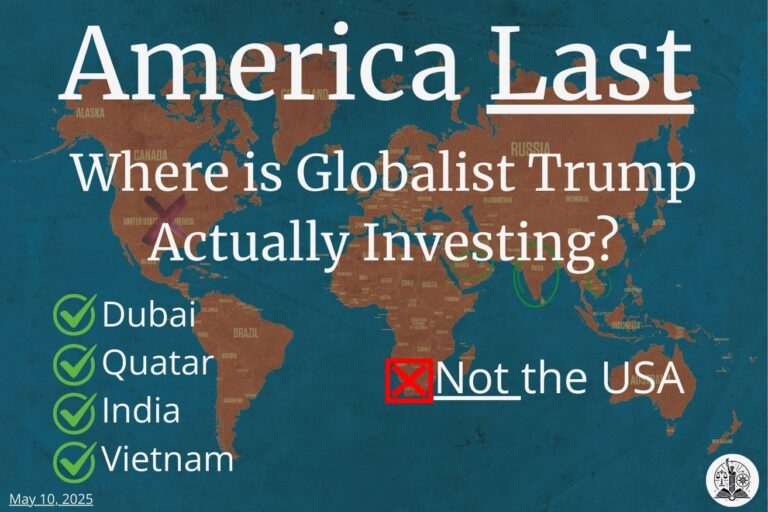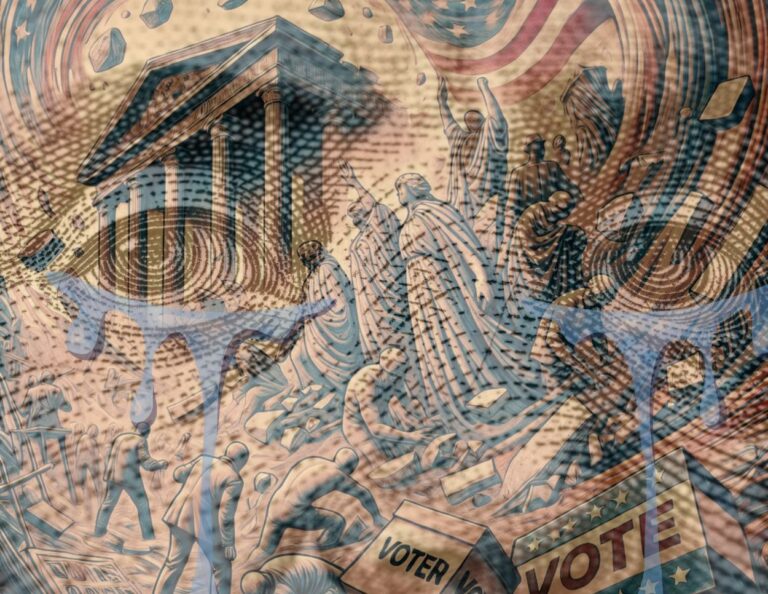The Fractured State of America: How Media Motivation Undermines Accountability and Governance
A Nation Divided by Headlines
America isn’t just politically fractured—it’s informationally fractured. In general, the media ecosystem, whether legacy, mainstream, or conservative, prioritizes outrage over facts, clicks over context, and fear over solutions. Instead of providing a shared foundation for public debate, media coverage reinforces division, shaping entirely different versions of reality depending on where people get their news.
This is not an indictment of “the media” as a whole, nor an argument that journalists on any side are inherently acting in bad faith. Rather, it is an examination of the structural incentives that shape modern news coverage—how economic pressures, audience demand, and the competition for attention drive editorial choices in ways that contribute to polarization.
The result is a system where:
- The public is emotionally manipulated rather than informed, reacting to narratives designed to provoke rather than to educate.
- Politicians govern based on media narratives rather than on measurable policy outcomes.
- Long-term accountability is replaced by short-term crisis cycles, where the next controversy overshadows the need to assess what actually works.
To understand how this plays out in real-time, let’s take a snapshot of the news cycle and examine how different outlets frame the biggest issues of the day.
A Snapshot of the Media Landscape
Here in the midwest at 6:45 AM on January 16, 2025, millions of Americans are waking up and checking the news. Some turn on the television, others scroll through their phones, but no matter how they consume information, one thing is certain: what they see depends entirely on where they look.
A conservative voter checking Fox News or Newsmax will find stories about economic nationalism, concerns over diversity policies, and Trump’s leadership. A liberal voter looking at CNN or MSNBC will see a different reality, one where Trump’s return represents a threat to democracy and far-right extremism is on the rise. Meanwhile, Reuters and The Hill cover a mix of domestic and international policy stories, often presented with less overt framing but still reflecting editorial choices about what deserves attention.
The differences go beyond bias or perspective—they extend to selection and prioritization of coverage.
- Fox News highlights a lawsuit related to the Obama Center, focusing on concerns about diversity policies.
- Newsmax leads with Trump’s trade policy, portraying it as a solution to global economic competition.
- CNN and MSNBC focus on Trump’s political influence, framing it as a growing crisis for democracy.
- Reuters and The Hill center their coverage on policy and international developments, covering Ukraine peace talks and Medicaid budget changes.
A single day’s headlines reveal that different outlets aren’t just interpreting events differently; they are choosing entirely different stories to cover.
- Someone who follows Fox News or Newsmax may not hear much about Medicaid budget cuts or Trump’s international diplomacy.
- A CNN or MSNBC audience might never encounter an economic debate framed outside of Trump’s impact on democracy.
- Readers of Reuters or The Hill may get more neutral coverage, but the choice of which stories to report still shapes how issues are perceived.
To err on the cautious side with respect to copyright and IP law, I’m choosing to not include images of the homepages, instead summarizing them in a table, and linking to the articles:
| FoxNews | Newsmax | Reuters | The Hill | CNN | MSNBC | |
|---|---|---|---|---|---|---|
| Primary Headline | Obama library championed DEI, but now plagued by $40m racial suit, ballooning costs | Trump Doubles Down on ‘Reciprocal’ Tariffs | US, Russia to meet in Saudi Arabia over Ukraine war | House GOP budget resolution in jeopardy amid concerns from moderates | Democrats confront their powerlessness as they take on Trump | Trump clearly has no issue burning bridges. But he should really think twice about this one. |
| Secondary Headline | Scientist spills the ‘secret’ to making America’s defense system the world’s best | Report: Russia-Ukraine Peace Talks Coming Soon | European countries will not create one united army, says Poland’s Sikorski | Why Musk may want to control OpenAI | Elon Musk’s dream comes true: The federal board that protects workers does not exist, at least for now | Vance’s first international trip is a scolding, dangerous affair |
This fragmentation is more than ideological bias—it creates separate realities. When Americans can’t even agree on what the biggest issues are, there is no common ground for meaningful debate, accountability, or decision-making. Instead of arguing over how to fix shared problems, the public is increasingly ideologically divided over what the problems even are.
We Don’t Have the Slightest Consensus on What America’s Biggest Issues Are
Looking at the headlines from different media outlets at the same moment in time, it’s clear that there is no agreement on what matters most. Each outlet prioritizes different topics, shaping its audience’s perception of what is urgent and important.
- Fox News leads with a lawsuit involving a contractor at the Obama Center, framing it as an example of problems with diversity, equity, and inclusion policies.
- Newsmax focuses on Trump’s trade agenda, portraying his push for reciprocal tariffs as a solution to economic competition.
- CNN and MSNBC emphasize Trump’s political resurgence, presenting it as a growing crisis for democracy and a sign of rising far-right influence.
- Reuters and The Hill focus on policy and international affairs, covering developments in the Ukraine peace talks and changes to the Medicaid budget.
This isn’t just a matter of different perspectives on the same events. The selection of what to cover determines what audiences see as the country’s most pressing challenges.
- Someone who relies on Fox News or Newsmax may not even hear about Medicaid budget cuts or the international response to Trump’s foreign policy moves.
- A reader of CNN or MSNBC may not be exposed to debates over economic policy beyond how they relate to Trump’s influence (likely as inherently bad).
- A politically neutral audience following Reuters or The Hill will see a more traditional mix of news, but the framing still influences how issues are perceived.
Importantly – there is no significant data shared to quantify, qualify and contextualize the discourse.
Without a shared set of priorities, there can be no meaningful national discussion about solutions.
- If voters in the same country are being presented with completely different lists of what is important, there is no common starting point for debate, compromise, or accountability.
- Instead of working from the same set of problems and arguing over how to fix them, Americans are increasingly living in separate realities, shaped by the media they consume.
We Don’t Just Disagree on Solutions—We Disagree on the Problems Themselves
Looking at the headlines from different media outlets, it’s not just that Americans disagree on how to solve the country’s problems—there is no agreement on what the problems actually are. The issues covered, the way they are framed, and the narratives built around them create entirely different versions of reality.
For example, Trump’s political resurgence is covered in starkly different ways.
- CNN and MSNBC present his influence as a growing crisis, warning that his return to power would threaten democracy.
- Newsmax and Fox frame his role in economic and foreign policy decisions as evidence of leadership, downplaying any threat to democracy.
- Reuters and The Hill take a more neutral approach, covering his political moves as events rather than existential threats or victories.
Another point of division is the GOP budget proposal and its impact on Medicaid.
- The Hill reports on the policy changes but does not assign moral weight or substantive detail, focusing instead on the arguments between factions.
- MSNBC and CNN frame the cuts as harmful to low-income Americans, with little discussion of fiscal policy arguments.
- Fox and Newsmax largely avoid the topic, focusing instead on economic or cultural issues more aligned with their audiences.
Even foreign policy is shaped by these differences.
- Reuters reports on Trump’s Ukraine peace talks as a diplomatic event without taking a stance.
- Newsmax portrays Trump’s involvement as a sign of strong leadership and negotiation skills.
- MSNBC warns that Trump is aligning with authoritarian leaders and undermining Ukraine’s sovereignty.
These gaps in coverage are not just about bias. If Americans are consuming completely different narratives about what is happening, they have no shared foundation for debating solutions. It becomes impossible to assess whether policies succeed or fail when entire segments of the population may not even be aware of them. Instead of arguing over the best way to address common challenges, the public is increasingly divided over whether those challenges even exist.
How “The Media” Optimizes Us for Clicks and Outrage
The Business Model of Rage: Outrage = Engagement = Profit
The modern media landscape is not designed to inform—it is designed to engage. The more time people spend consuming news, the more valuable they are to advertisers, subscription models, and media companies. Outrage is one of the most effective ways to capture attention, and news outlets have built their business models around it.
The cycle works like this:
- A media outlet selects a story designed to provoke an emotional response.
- The story is framed in a way that reinforces audience biases, making them feel validated.
- Important context is omitted or downplayed if it might weaken the emotional impact.
- The audience reacts, shares the story, and remains engaged, returning for more.
This cycle is not exclusive to any political ideology. Left-leaning and right-leaning media both rely on it, even if the narratives differ. The goal is not necessarily to deceive, but to keep audiences emotionally invested.
Some of the headlines (and subsequent stories) from today illustrate how this model works in practice.
- Fox News leads with a story about a lawsuit involving the Obama Center, tying it to diversity, equity, and inclusion policies. The framing reinforces conservative concerns about affirmative action, positioning it as a system that causes harm rather than one that provides opportunities. Missing from the coverage is the fact that the lawsuit is between contractors, not the Obama Foundation itself.
- Newsmax emphasizes Trump’s push for reciprocal tariffs, presenting it as a necessary move to protect American industry. The framing suggests that foreign competitors are taking advantage of the U.S., while ignoring the potential downsides, such as increased costs for consumers or the historical impact of previous tariffs.
- CNN focuses on the idea that Democrats feel powerless against Trump’s growing influence, painting the situation as an urgent political crisis. The coverage reinforces the fear that Trump’s return is inevitable, without analyzing whether Democratic policies or messaging failures have contributed to the shift in voter sentiment.
- MSNBC runs a story about Trump’s allies engaging with far-right political movements in Europe, framing it as part of a broader rise in global authoritarianism. The framing primes audiences to see Trump not just as a political opponent, but as a direct threat to democracy itself. Missing from the coverage is any discussion of how much actual influence these European movements have or whether they are growing beyond fringe status.
In each case, the headline is crafted to drive engagement by triggering a reaction—anger at unfairness, fear of impending disaster, or a sense of validation that the audience’s worldview is correct.
Outrage-based media consumption changes how people process information. Instead of analyzing policies based on their impact or effectiveness, people evaluate them based on whether they align with their side. When news is structured to generate emotional reactions instead of deeper understanding, political decision-making becomes driven by identity and tribalism rather than facts and outcomes.
The result is a public that is more informed about what they should be angry about than about what actually works. Instead of focusing on long-term governance, political conversations become battles over the latest controversy, ensuring that media outlets continue to profit from the cycle.
The Psychological Impact: We Stop Thinking Critically
When news is designed to provoke an emotional reaction, it changes how people process information. Instead of analyzing issues with a critical eye, people are conditioned to react instinctively—whether with outrage, fear, or affirmation of their existing beliefs. Over time, this creates a media environment where people feel informed, but are actually becoming less capable of thinking critically about the issues that affect them.
The effects of this emotional conditioning are significant.
- Fear-based media consumption increases anxiety and stress. When every news cycle presents the latest political event as a catastrophe, audiences become desensitized to more moderate or nuanced discussions.
- People seek out information that reinforces their worldview. Instead of looking for diverse perspectives, they engage primarily with sources that confirm what they already believe, making them more resistant to changing their minds even when presented with new evidence.
- Political discussions become identity-driven rather than fact-based. When people feel personally attacked by opposing viewpoints, conversations become emotional battles rather than reasoned debates about policy or governance.
- Short-term outrage replaces long-term thinking. If every news cycle is framed as an urgent crisis, there is little room for discussions about the effectiveness of policies over time.
Today’s headlines (and stories) illustrate how this plays out.
- Fox News frames a contractor lawsuit at the Obama Center as evidence that diversity policies are harmful, reinforcing an existing belief among its audience that affirmative action is unfair. The coverage is designed to evoke frustration and indignation rather than a deeper analysis of how such policies function in practice.
- Newsmax presents Trump’s tariff proposals as a patriotic stand against unfair trade, emphasizing the need for economic protectionism while downplaying potential downsides. The framing encourages emotional investment in Trump’s leadership rather than a discussion about the economic complexities of tariffs.
- CNN tells its audience that Democrats feel powerless in the face of Trump’s growing influence, tapping into a sense of anxiety and urgency. The framing encourages an emotional reaction rather than a strategic discussion about how political dynamics are shifting and any data to map those pivots.
- MSNBC links Trump’s allies to far-right movements in Europe, heightening fears of authoritarianism. By focusing on what the audience will perceive as the worst-case scenario, the coverage fosters alarm and emotional engagement rather than an exploration of political trends in those countries.
This constant emotional engagement changes the way people consume and interpret information. Instead of approaching political issues with a problem-solving mindset, audiences become locked in cycles of reaction and reinforcement. Critical thinking is replaced by a need to stay engaged in the latest controversy, ensuring that media companies continue to profit from the attention economy.
The more people are conditioned to respond emotionally, the harder it becomes to engage with politics in a meaningful way. Instead of discussing policy effectiveness, long-term consequences, or evidence-based solutions, public discourse revolves around emotional responses to an ever-changing cycle of outrage.
How Does This Undermine Accountability and Decision-Making?
The Rejection of Policy-Based Elections
Elections are supposed to be about choosing leaders based on their policies, yet media coverage has increasingly shifted away from substantive discussions of governance. Instead, elections are framed as competitions between personalities, scandals, and broad ideological battles. The result is a voting process that prioritizes perception over policy, leaving many voters without the information they need to make informed decisions.
The Rise of Horse Race Journalism
One of the biggest reasons for the decline in policy-based elections is the media’s focus on horse race journalism, where campaigns are covered like sporting events.
- News coverage is dominated by polling numbers, campaign strategy, and fundraising totals rather than detailed analysis of policy proposals.
- Candidates are evaluated on performance in debates, interviews, and public appearances, rather than the details of their legislative records.
- The constant stream of political controversies and shifting narratives means there is little time for sustained discussions on key policy areas.
This kind of coverage shapes voter perception, making elections feel more like entertainment than a process of evaluating governance.
Personality Over Policy
Media coverage also places a heavy emphasis on the personalities of candidates, often overshadowing the policies they intend to implement.
- Scandals, gaffes, and past personal behavior often receive more media attention than policy platforms.
- Candidates are judged on electability, charisma, and debate performance rather than on how they would govern.
- When policy is discussed, it is often reduced to soundbites rather than analyzed in depth.
This focus means that voters are often left with strong opinions about candidates as individuals, but little knowledge about what they actually plan to do in office.
The Impact on Voter Decision-Making
Without consistent policy coverage, many voters struggle to determine where candidates stand on important issues.
- A study by Harvard Kennedy School professor Thomas E. Patterson found that policy issues accounted for only 10% of news coverage during the 2016 presidential election, while the majority of coverage focused on horse race journalism—who was winning or losing and why. The study concluded that the press largely failed to provide voters with substantive information on candidate policies. (Harvard Kennedy School)
- A recent Pew Research Center study titled “Americans’ Views of 2024 Election News” provides insights into how U.S. adults are engaging with and perceiving election-related news. Key findings from the study include:
- Difficulty in Assessing Truthfulness: Approximately 52% of Americans report finding it challenging to discern true information from falsehoods when consuming election news.
- Exposure to Inaccurate Coverage: A significant 73% of U.S. adults indicate they encounter inaccurate news about the 2024 presidential election at least somewhat often, with 37% encountering such information extremely or very often.
- Partisan Differences in Perceptions: Democrats are more likely than Republicans to say finding reliable information has been easy (52% vs. 29%), while Republicans are more inclined to say it’s been difficult (39% vs. 18%).
- Primary Sources for Election News: Television remains the most common platform for political and election news, with 35% of U.S. adults relying on it, followed by news websites or apps (21%) and social media (20%).
- Close Following of Election News: About 69% of Americans are following news about the presidential candidates very or fairly closely. (Pew Research Center)
- A study published in Electoral Studies suggests that when voters lack clear policy information, they tend to evaluate candidates based on personality traits or party affiliation rather than on policy positions. The research found that media framing and lack of policy discussion contribute to this pattern, leading voters to make decisions based on emotional or identity-driven factors rather than governance considerations. (National Library of Medicine)
This lack of policy focus makes elections more about tribal identity than governance. When voters cannot easily compare policy proposals, they are more likely to make decisions based on emotional reactions, reinforcing political polarization.
Consequences of Policy Omission
- Elections become about image and campaign strategy rather than governance.
- Voters struggle to hold politicians accountable for past policy decisions.
- Public debate is shaped by emotional and ideological battles rather than substantive discussions.
- Elected officials are incentivized to focus on rhetoric and branding rather than long-term policy effectiveness.
Restoring policy-based elections would require a shift in both media priorities and voter expectations. Media outlets would need to spend less time on polling and more time on policy comparisons, while voters would need to demand more substance from candidates and debates. Without that shift, elections will continue to be driven by personalities rather than by the decisions that will shape the country’s future.
The Election Cycle Short-Circuits Policy Continuity
The U.S. election system is built to allow for political change, ensuring that voters can hold leaders accountable and shift policy direction when necessary. This flexibility is a key feature of democratic governance, but it also comes with a major drawback—frequent policy reversals that occur without thorough evaluation of their effectiveness. Instead of assessing whether policies have succeeded or failed based on measurable outcomes, elections often become battles over party control, where new leadership is expected to undo the work of its predecessors.
Without structured policy reviews, decisions are made based on ideology rather than evidence. This means that major policies are frequently repealed, modified, or replaced, not because they were ineffective, but because they were enacted by the opposing party. The lack of long-term analysis leads to a cycle where policies are implemented, discarded, and reintroduced with little understanding of their real impact.
The Role of Media in Framing Policy Debates
Rather than focusing on whether policies have achieved their intended goals, media coverage often presents policy discussions in simplistic, partisan terms.
- Healthcare Policy: Discussions on the Affordable Care Act rarely focus on whether it improved access to healthcare or controlled costs. Instead, coverage is dominated by political narratives—one side frames it as government overreach, while the other defends it as essential protection. This prevents a data-driven assessment of its successes and failures.
- Economic Policy: Tax cuts, trade policies, and regulatory changes are typically discussed using broad ideological slogans like “pro-business” or “fair share.” The long-term economic effects—such as whether specific tax cuts led to job growth or deficits—are rarely analyzed in depth. Instead, policies are judged based on political alignment rather than economic outcomes.
The Consequence
When voters are asked to choose between policy directions, they are often doing so without access to reliable, long-term performance data. Instead of evaluating past policies based on real-world effects, elections become a contest of competing narratives, leaving the electorate with little concrete information to assess what has actually worked.
Without a stronger commitment to analyzing the impact of policy decisions over time, governance risks becoming a cycle of constant revision and reversal rather than a process of refining and improving long-term strategies.
No Learning from Past Mistakes
When policies are not systematically reviewed after implementation, there is little opportunity to learn from their successes or failures. Without structured evaluations, policies are often judged based on political alignment rather than measurable impact. As a result, political leaders can continue making the same promises, implementing the same strategies, and reversing previous policies without meaningful scrutiny.
Instead of refining policies based on evidence, decisions are driven by public perception and media narratives. If a policy appears popular or aligns with a party’s platform, it is defended regardless of its effectiveness. If it was enacted by the opposition, it is often dismantled without examining whether it produced positive results. This cycle prevents long-term progress, as the same debates repeat without new insights or improvements.
The Impact of Sensationalized Narratives
Media coverage plays a major role in shaping how policies are judged. Rather than focusing on long-term results, coverage tends to highlight short-term controversies or emotional reactions.
- Crime Policy: Crime waves often dominate headlines, with coverage focused on fear and urgency. Discussions about policing models, sentencing reforms, or community programs rarely examine which approaches have actually reduced crime over time. Instead, policy debates cycle between tough-on-crime crackdowns and calls for reform, often without an evidence-based assessment of past policies.
- Policies like “stop and frisk” were widely used in some cities to reduce crime but were later abandoned due to concerns about racial profiling and effectiveness. However, there was little structured evaluation of what elements of these policies, if any, contributed to crime reduction.
- Efforts to reform bail systems or decriminalize certain offenses are often met with extreme reactions—either as being too lenient or too harsh—without studies tracking how these changes impact recidivism or public safety over time.
- Economic Policy: Tax cuts, stimulus spending, and trade tariffs are often enacted based on political ideology rather than a careful study of what works.
- Some tax cuts are promoted as a means of economic growth, but few are systematically evaluated for their actual impact on job creation, wages, or deficits. The same tax policies are often reintroduced by different administrations, with little reflection on whether they achieved their intended outcomes.
- Trade tariffs are frequently used to protect domestic industries, but their long-term effects—such as higher costs for consumers, supply chain disruptions, or retaliation from trade partners—are rarely considered in media discussions. Instead, debates focus on whether a policy feels “pro-business” or “anti-globalization.”
- Government spending programs, including infrastructure bills and stimulus packages, are often passed in response to crises but receive little long-term evaluation. A major spending bill may be touted as an economic boost or criticized as wasteful, but there is rarely an objective assessment of which projects created lasting economic benefits and which failed to deliver on their promises. Instead, new spending proposals are debated based on political narratives rather than lessons from past initiatives.
- Healthcare Policy: The ongoing debate over healthcare reform is often driven by ideological battles rather than evidence-based policymaking.
- The Affordable Care Act has been the subject of repeated political fights, with little structured analysis of which provisions have improved access to care and which may need adjustment. Discussions about repeal or expansion often rely on partisan narratives rather than data-driven reviews of healthcare costs and outcomes.
- Drug pricing reforms are frequently debated, but past efforts to regulate pharmaceutical costs are rarely analyzed in terms of their impact on innovation, supply chains, or patient affordability. Instead, policies are often framed as being either “pro-consumer” or “anti-business” without deeper discussion of their real effects.
When policies are framed in terms of immediate crisis rather than long-term outcomes, there is little incentive for politicians and their policymakers to evaluate efficacy. Instead of identifying strategies and tactics that have succeeded, leaders recycle old proposals, making familiar promises that resonate with voters but fail to address underlying issues.
Without a commitment to collecting the data and reporting transparently regarding the outcomes and effects of policies, decision-making remains knee-jerk and reactive rather than strategic. Effective change is made difficult when leaders are not held accountable for whether their policies actually solve the problems they claim to address.
Elevating the Long-Term View in Political Discourse
Political discussions today are often shaped by immediate reactions, crisis narratives, and partisan battles, leaving little room for evaluating whether policies actually work. Instead of letting policy debates be dictated by short-term outrage cycles, there needs to be a shift toward a more structured and long-term approach to governance.
To make this shift, discussions should incorporate:
- Evidence-based evaluations of past policies to determine what has been effective and what has not, ensuring that decisions are guided by measurable outcomes rather than ideological assumptions.
- Media coverage that asks ‘What happened next?’ rather than moving on to the next controversy or political spectacle. Following up on the impact of major policy decisions would provide a clearer picture of their effectiveness.
- Voter expectations that prioritize intent, effectiveness, outcomes, and unintended consequences. Policies should be judged not just on ideological appeal or campaign promises, but on their real-world impact.
This does not mean locking policies into place indefinitely or preventing future changes. It means ensuring that policy shifts are based on informed decision-making rather than reactionary reversals. Past results, present realities, and future implications should all be part of the conversation, replacing emotion-driven cycles with discussions grounded in evidence and long-term consequences.
In an upcoming article, we’ll explore specific ways to shift political discourse toward accountability and measurable policy outcomes. From how government agencies track success to how voters can demand better information, the next step is identifying practical solutions to break the cycle of reactionary decision-making.
Sources Include
- https://www.foxnews.com/us/obama-center-subcontractor-hired-under-dei-initiative-now-suing-40m-racial-discrimination-lawsuit
- https://www.foxbusiness.com/media/us-iron-dome-needs-far-more-complex-deal-near-peer-threats-expert-says
- https://www.newsmax.com/newsfront/trump-tariffs-reciprocal/2025/02/15/id/1199243/
- https://www.newsmax.com/newsfront/trump-peace-talks/2025/02/15/id/1199224/
- https://www.reuters.com/world/trump-team-start-russia-ukraine-peace-talks-saudi-arabia-coming-days-politico-2025-02-15/
- https://www.reuters.com/world/europe/european-countries-will-not-create-one-united-army-says-polands-sikorski-2025-02-16/
- https://thehill.com/homenews/5146860-gop-budget-resolution-moderates-medicaid/
- https://thehill.com/policy/technology/5143824-elon-musk-sam-altman-openai-bid/
- https://www.cnn.com/2025/02/16/politics/democrats-strategy-powerless-trump/index.html
- https://www.cnn.com/2025/02/15/business/nlrb-trump-musk-workers/index.html
- https://www.msnbc.com/opinion/msnbc-opinion/trump-hegseth-ukraine-russia-nato-rcna192135
- https://www.msnbc.com/top-stories/latest/jd-vance-germany-far-right-afd-europe-rcna192344
- https://www.hks.harvard.edu/publications/news-coverage-2016-general-election-how-press-failed-voters
- https://www.pewresearch.org/journalism/2024/10/10/americans-views-of-2024-election-news/
- https://www.ncbi.nlm.nih.gov/pmc/articles/PMC9831368/
- https://www.apa.org/monitor/2022/11/strain-media-overload
- https://mcpress.mayoclinic.org/mental-health/constant-coverage-of-scary-news-events-can-overwhelm-the-body/
- https://tpv-96307.medium.com/building-bridges-through-critical-media-consumption-5165b73a8aee







